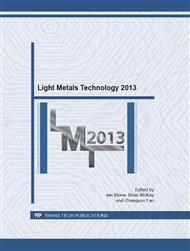p.403
p.408
p.413
p.418
p.423
p.429
p.434
p.439
p.444
The Strength and Ductility of 5483 Aluminium Alloy Processed by Various SPD Methods
Abstract:
Grain size refinement is an efficient way to improve mechanical strength and thus make light metals even lighter in terms of specific strength. However, the strength improvement is at the expense of ductility. Therefore, a better understanding of microstructural factors influencing both parameters is of prime importance for further development of ultrafine grained materials. In this work, we report results obtained for 5483 aluminium alloy which was subjected to several severe plastic deformation (SPD) methods, i.e. equal channel angular pressing (ECAP), Hydrostatic Extrusion (HE) and the combination of the two. Detailed microstructural analysis revealed significant difference in the grain size and grain boundary characteristics between samples obtained following different routes. It was found that although the grain size is a prime microstructural parameter determining mechanical strength, second order factors such as grain size distribution and distribution of grain boundary misorientation angles also play a significant role.
Info:
Periodical:
Pages:
423-428
Citation:
Online since:
July 2013
Keywords:
Price:
Сopyright:
© 2013 Trans Tech Publications Ltd. All Rights Reserved
Share:
Citation:


